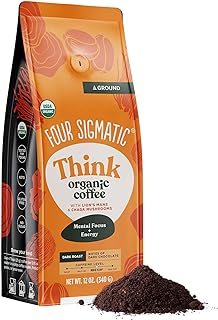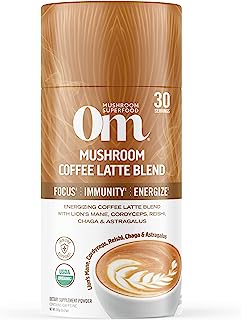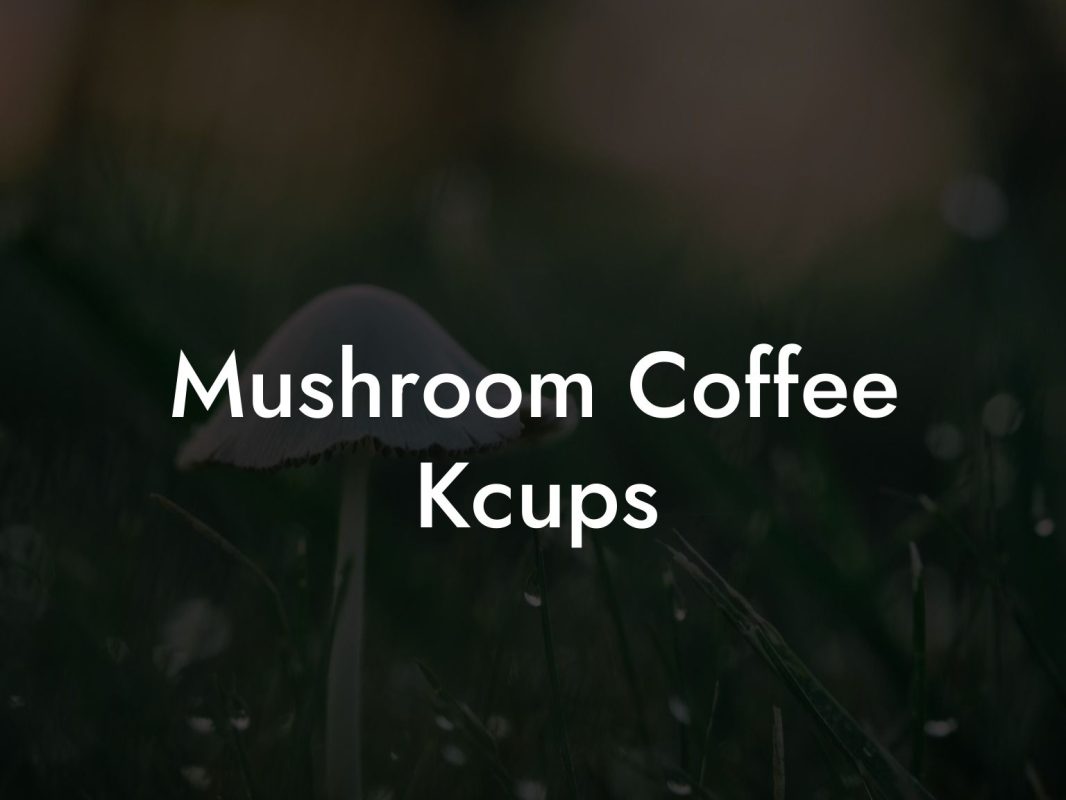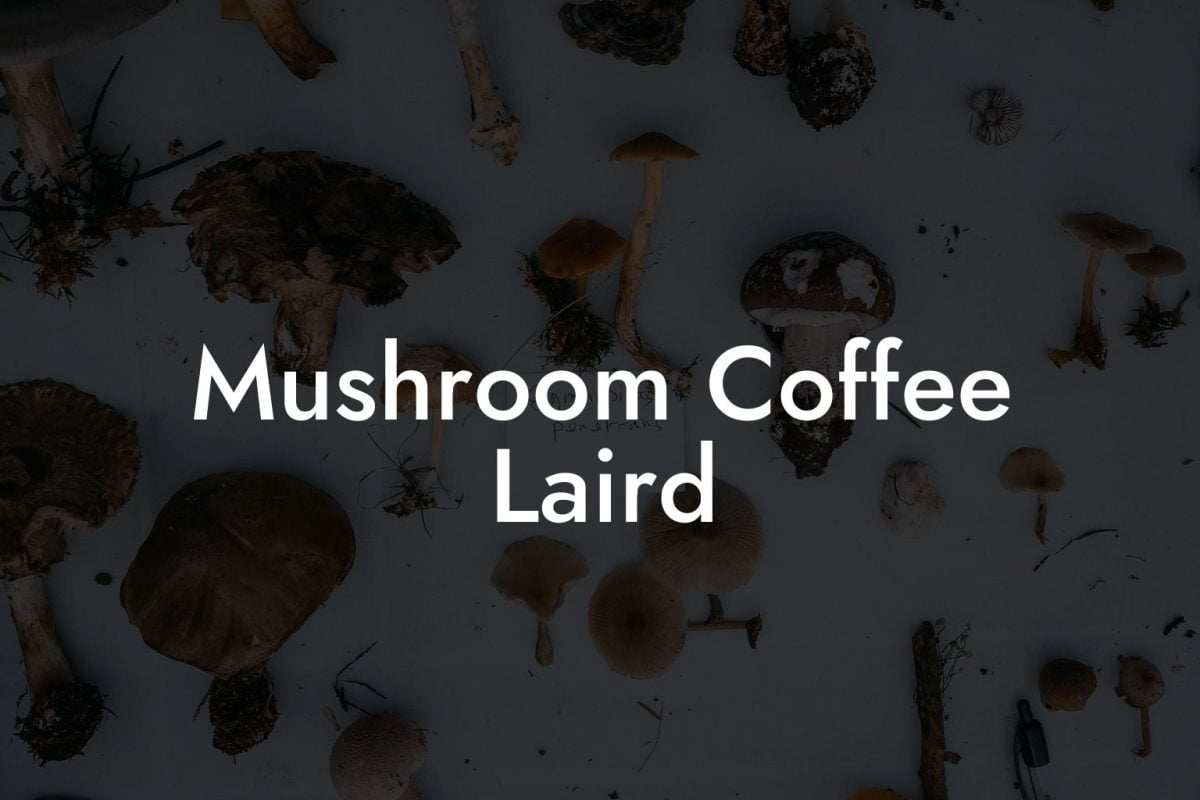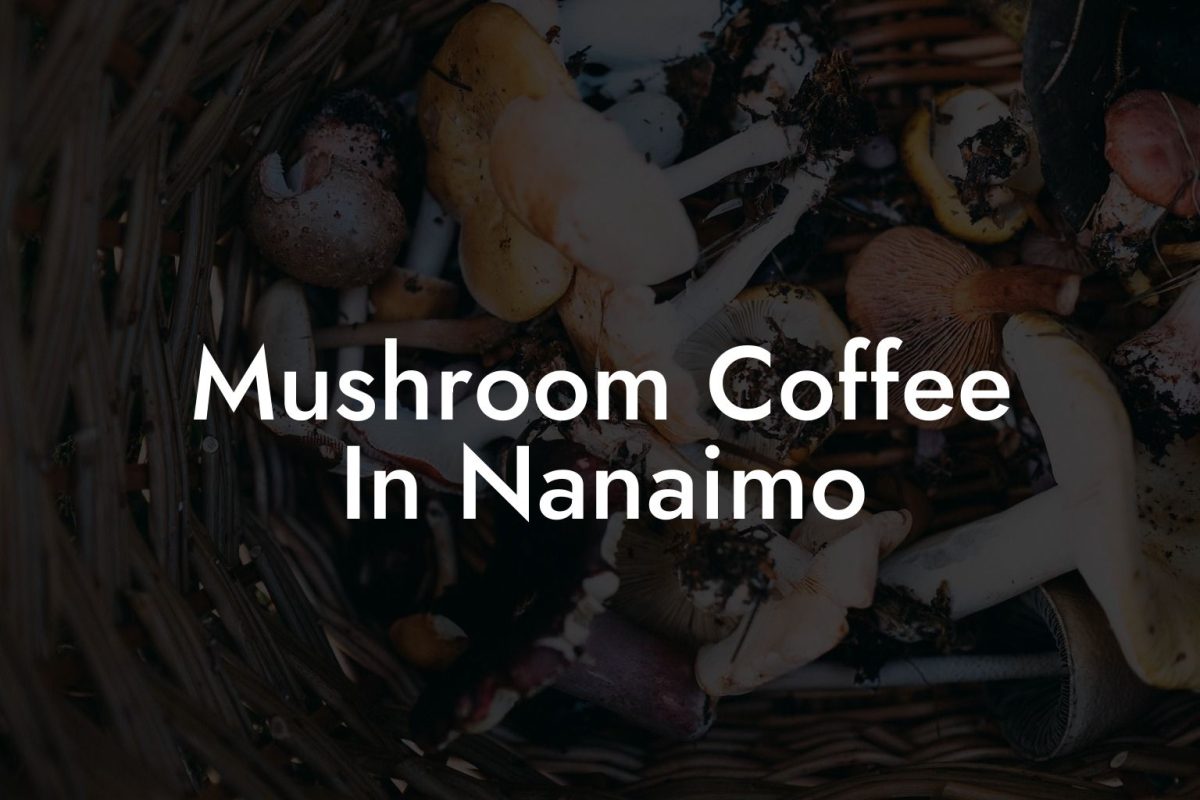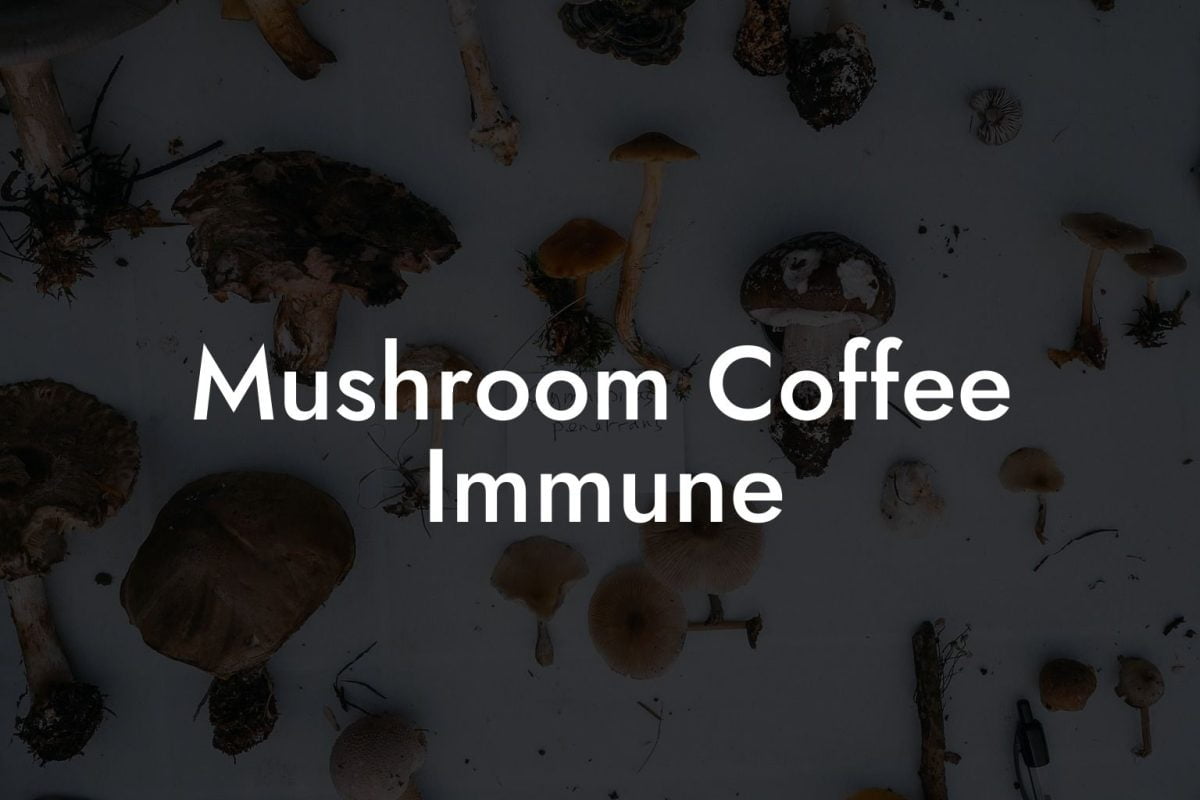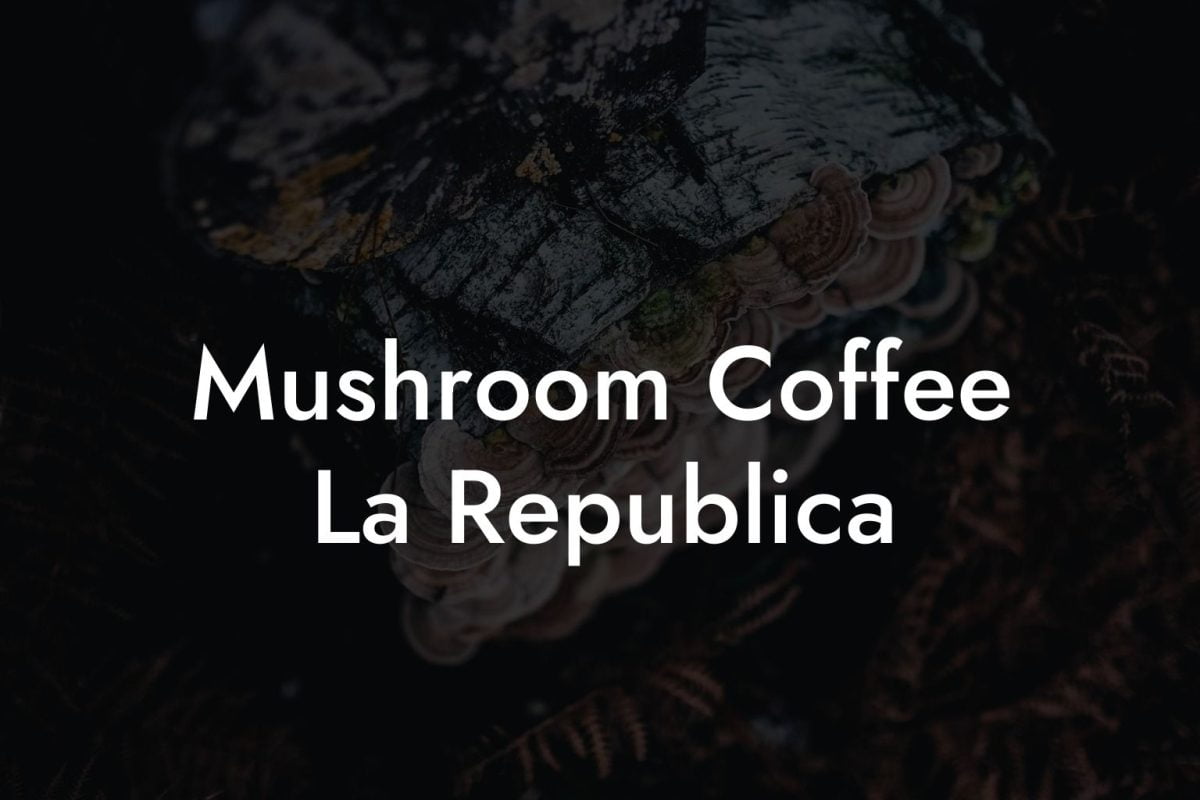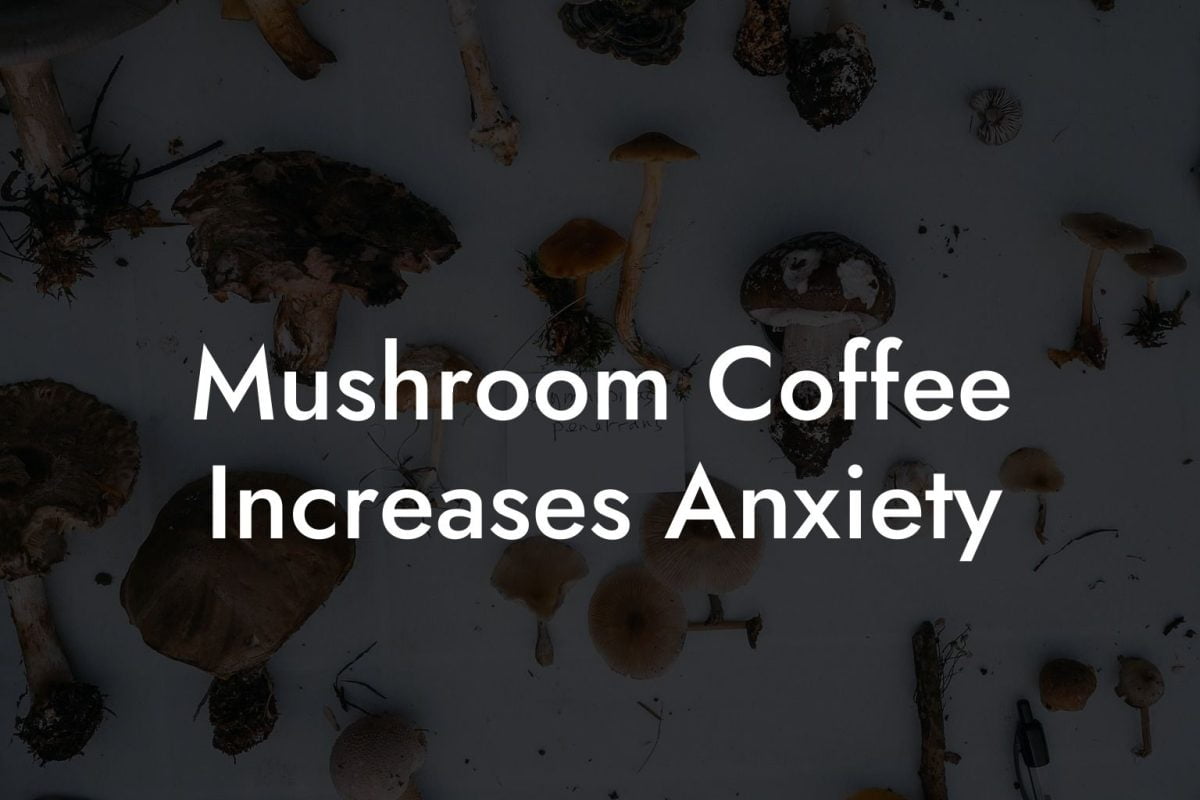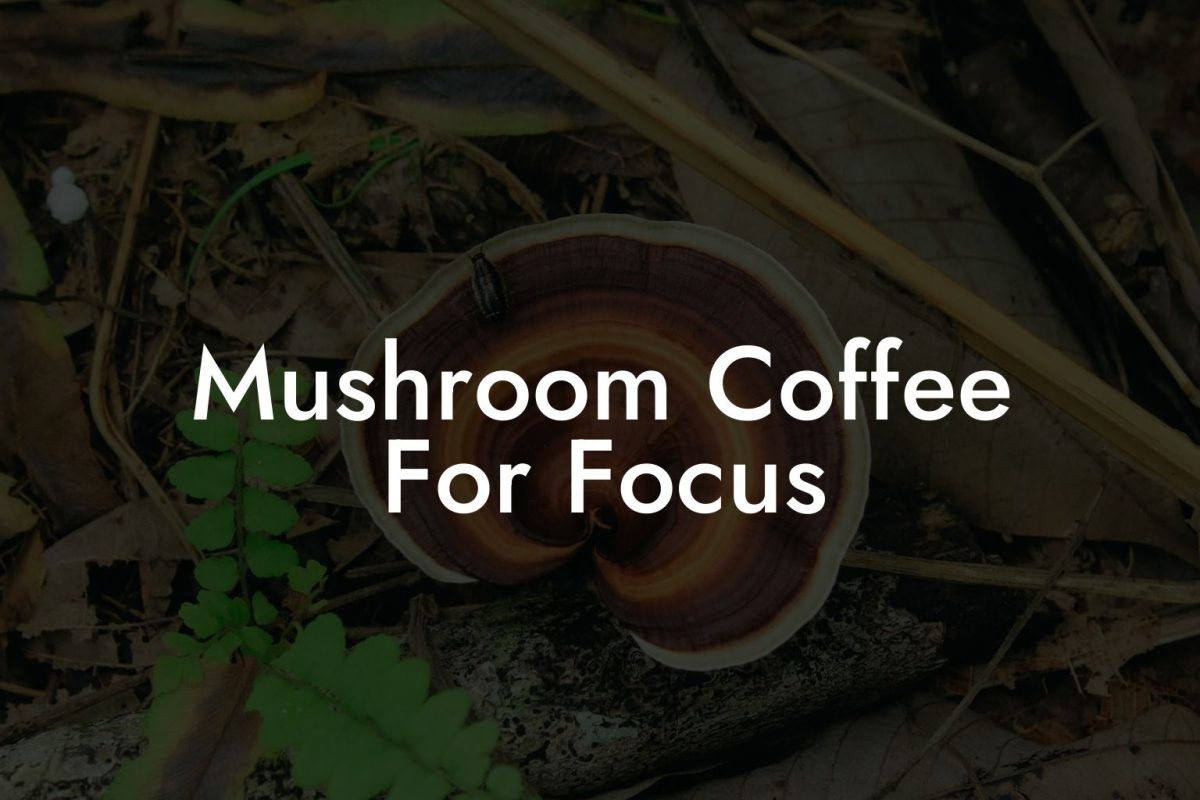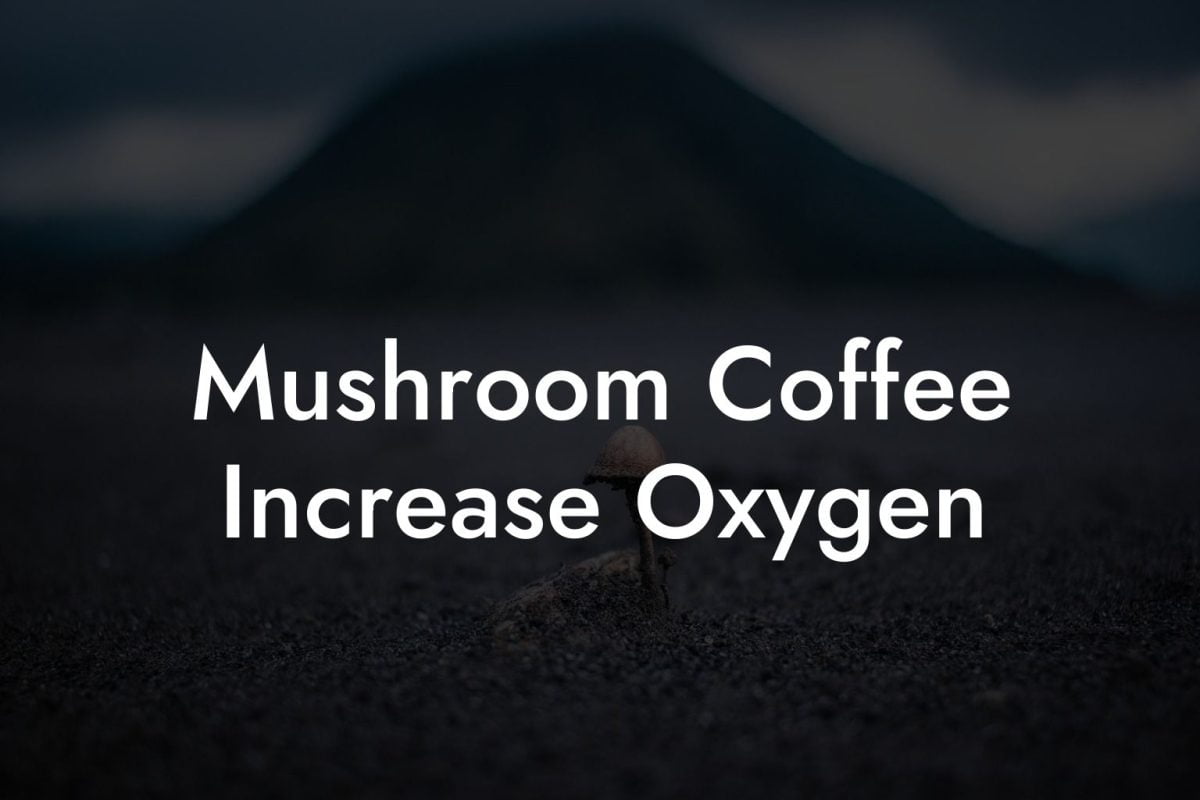Picture this: you've just wrapped up your morning ritual of sipping a delicious, artisanal brew when you realize that your coffee grounds aren’t destined for the trash, they’re about to embark on an epic eco-adventure, transforming into the perfect home for your very own mushrooms. Welcome to the bold and innovative world of using spent coffee grounds for mushroom growing, where sustainability meets next-gen ingenuity, and eco-friendly living is anything but boring.
Quick Links to Useful Sections
- Introduction: Brewing Sustainability with Spent Coffee Grounds
- The Science Behind Spent Coffee Grounds and Mushroom Cultivation
- Benefits of Using Spent Coffee Grounds for Mushroom Growing
- Step-by-Step Guide to Using Spent Coffee Grounds for Mushroom Cultivation
- Step 1: Collecting Your Coffee Grounds
- Step 2: Preparing the Substrate
- Step 3: Pasteurization
- Step 4: Inoculation with Mushroom Spawn
- Step 5: Incubation and Colonization
- Step 6: Fruiting Stage
- Step 7: Harvest, Enjoy, and Recycle
- Essential Tips and Tricks for Gen-Z Eco-Mushroom Growing
- 1. Embrace Microbial Diversity
- 2. Monitor Your Substrate’s Moisture Levels
- 3. Contamination Control Is Key
- 4. Track Your Progress Digitally
- 5. Experiment with Different Mushroom Species
- Troubleshooting Your Mushroom Growing Journey
- Mushroom Coffee: Where Sustainable Growing Meets Next-Gen Lifestyles
- Resources and Community Support: Your Next Steps
- Frequently Asked Questions About Spent Coffee Grounds for Mushroom Growing
- Your Journey to a Sustainable, Fungi-Fueled Future
Introduction: Brewing Sustainability with Spent Coffee Grounds
Millennials and Gen-Zers are all about sustainability, minimal waste, and a passion for doing things a little differently. And what’s more innovative than taking those aromatic, discarded coffee grounds from your favorite local café or your in-house barista machine and turning them into a nutrient-rich substrate for mushrooms? Whether you're an urban homesteader, a DIY enthusiast, or just someone who loves a good eco-hack, this guide is your ticket to transforming something as ordinary as coffee waste into an extraordinary growing medium.
In today’s fast-paced world, our routines are evolving. We’re not just consuming coffee; we’re rewriting its destiny. This approach not only breathes new life into what would otherwise be waste but also contributes to organic mushroom growing, sustainable agriculture, and even the production of mushroom coffee, a trend that’s stirring up the beverage scene by merging the health benefits of mushrooms with the kick of caffeine.
So, if you’re ready to dive into a realm where eco-innovation meets culinary creativity, read on. We’re about to explore everything from the science behind coffee-ground substrates to practical, step-by-step guides that will help you grow your own gourmet mushrooms right at home.
The Science Behind Spent Coffee Grounds and Mushroom Cultivation
At the heart of mushroom growing is the quest for the perfect substrate, one that provides the right blend of nutrients and structure for your fungi to flourish. Enter spent coffee grounds, nature’s unsung heroes in the realm of organic mushroom cultivation. But what makes them so special?
Looking For The Best Mushroom Coffee? You'll Love These:
When you brew your cup of joe, the process leaves behind coffee grounds that are rich in organic matter. These grounds contain nitrogen, some essential minerals, and a structure that promotes aeration, making them an ideal base for certain mushroom species such as oyster mushrooms, shiitake, and even lion’s mane. The magic lies in the coffee’s natural acidity and microbial activity, which can suppress unwanted pathogens while giving your mushrooms a nutrient-packed, competitive edge.
The use of spent coffee grounds in mushroom cultivation is nothing short of a match made in eco-heaven. The grounds’ fibrous texture helps bind water without becoming too soggy, ensuring that your mini fungi have a stable microenvironment. When mixed with additional supplements such as straw, sawdust, or even vermiculite, the resulting blend creates a superb substrate that’s as efficient as it is sustainable.
From a scientific perspective, the fermentation process involved in mushroom growing mimics natural decomposition. The coffee grounds decompose under controlled conditions, with mycelium, the vegetative part of the fungus, rapidly colonizing the substrate. This symbiotic process not only recycles nutrients but also reduces waste, making it a stellar example of circular economy in action.
In short, the spent coffee grounds you tossed out today are reimagined tomorrow as the nurturing foundation for a new crop of mushrooms, bridging ecological consciousness with cutting-edge agrotech.
Benefits of Using Spent Coffee Grounds for Mushroom Growing
Adopting this eco-friendly method comes with a myriad of perks that echo the values of sustainability and resourcefulness. Let’s break down the top benefits:
- Eco-Friendly and Waste-Reducing: Instead of contributing to landfill waste, your coffee grounds get a second life. This not only reduces your environmental footprint but also supports a circular economy.
- Nutrient-Rich Substrate: Packed with organic matter and essential minerals, spent coffee grounds provide an excellent base for mushroom mycelium to thrive.
- Cost-Effective: Coffee is a daily habit for many, meaning coffee grounds are abundant and essentially free, making them an economical choice for home growers.
- Improved Mushroom Yield: The optimal mix of nutrients and structural properties helps to boost the overall yield and quality of your mushrooms.
- Enhanced Flavor Profiles: Mushrooms grown on coffee-ground substrates sometimes exhibit a richer, earthier flavor, a nod to the coffee’s inherent characteristics.
- Simplified Process: With the right methods, integrating coffee grounds can simplify substrate preparation, reducing the reliance on synthetic fertilizers and additives.
- Contributes to the Mushroom Coffee Trend: By nurturing organic mushrooms at home, you’re also joining an avant-garde trend that blends health and sustainability. Mushroom coffee is gaining traction for its potential benefits, including improved focus, enhanced energy, and natural adaptogens.
Each of these benefits not only supports more sustainable agricultural practices but also resonates with the DIY spirit of today’s eco-savvy communities. If you're all about making a positive impact while enjoying the fruits (or fungi) of your labor, this method is certainly worth exploring.
Step-by-Step Guide to Using Spent Coffee Grounds for Mushroom Cultivation
Ready to roll up your sleeves and embark on your very own mushroom growing adventure? Here’s a comprehensive, step-by-step guide that takes you from kitchen counter to harvest.
Step 1: Collecting Your Coffee Grounds
The journey begins with the collection of fresh, spent coffee grounds. Whether you’re a home brewer collecting your own leftovers or partnering with your favorite coffee shop for their daily discard, ensure that the grounds are free from mold and contaminants. Fresh grounds are best since old, dried-out coffee may not have the necessary moisture content.
Pro tip: Store your collected coffee grounds in a clean, airtight container in the fridge if you’re not planning to use them right away. This slows down the growth of undesirable microbes.
Step 2: Preparing the Substrate
Mixing your coffee grounds with other substrate components is key. Depending on the mushroom species you plan to grow, you might consider blending the grounds with materials like straw, sawdust, or even coir fiber. Aim for a blend that has a balanced moisture level, too wet, and you risk contamination; too dry, and the mycelium may struggle to colonize.
For a simple mixture, combine 60% spent coffee grounds with 40% of another substrate component, and add a little water to achieve a moist, clumpy texture that doesn’t drip water when squeezed.
Step 3: Pasteurization
Before inoculating your substrate with mushroom spawn, it’s essential to pasteurize your mixture to reduce the risk of competing organisms and contaminants. This can be achieved by lightly heating your substrate. You can use methods such as steam pasteurization, either in a pressure cooker or a large pot, until the temperature reaches around 160°F (71°C) for 60 minutes.
Don’t worry about sterilizing everything perfectly; pasteurization is sufficient to create a conducive environment for mushroom growth, unlike full sterilization which might be overkill for a DIY project.
Step 4: Inoculation with Mushroom Spawn
After cool-down, it’s time to introduce your desired mushroom species. Whether you’re working with oyster, shiitake, or another variety, evenly mix the mushroom spawn into your prepared substrate. This is where the magic happens, as the spawn begins to colonize the nutrient-rich coffee grounds.
Use sanitized equipment and ensure that your work area is clean to avoid unwanted contaminants. For casual growers, pre-packaged spawn can be found online or at local gardening stores.
Step 5: Incubation and Colonization
Transfer your inoculated substrate into clean, breathable containers or specially designed mushroom grow bags. Place the container in a dark, warm space (ideally between 65°F and 75°F or 18°C to 24°C) where the mycelium can slowly and steadily colonize the substrate.
This is the part where patience, and a little trust in nature, is your best friend. In just a couple of weeks, you’ll notice the white, thread-like mycelium spreading throughout the mix.
Step 6: Fruiting Stage
Once your substrate is fully colonized, it’s time to induce fruiting, the stage where mushrooms start sprouting. This usually requires shifting to a lighter, more humid environment. Increase fresh air circulation with gentle fanning and adjust the lighting to indirect sunlight or low-intensity LED light. Maintain proper humidity levels by using a spray bottle to mist the area as needed.
Within days, those tiny pins will develop into full-fledged mushrooms. Keep an eye on them, as the optimal harvest time is just before the caps fully flatten, ensuring the best flavor and texture.
Step 7: Harvest, Enjoy, and Recycle
The final step is the most satisfying, harvesting! Using a clean, sharp knife, cut the mushrooms at the base. Enjoy them fresh in your salads, stir-fries, or even as an innovative twist in your morning mushroom coffee blend. And here’s a kicker: once you harvest, don’t discard the remaining substrate. It can be composted or even used in a second flush, giving you another round of mushroom magic.
Voilà! By following these steps, you transform everyday coffee waste into a potent catalyst for organic mushroom growing. It’s a win-win for both your health and the planet.
Essential Tips and Tricks for Gen-Z Eco-Mushroom Growing
For the modern eco-warrior who thinks outside the (litter) box, every detail matters. Here are some insider tips and creative hacks to level up your mushroom cultivation game:
1. Embrace Microbial Diversity
A dash of curiosity goes a long way, experiment by adding different organic components like shredded cardboard, leaves, or even a sprinkle of calcium carbonate to manage acidity. Unique blends can create unusual flavor profiles and might even boost yield, making your project a fun science experiment in your own kitchen!
2. Monitor Your Substrate’s Moisture Levels
Keep your substrate on point by checking its moisture regularly. If you feel like you’re in an episode of a survival show, try the squeeze test: if a handful of substrate releases a few drops, you're in the ballpark. Too wet? Let it air out. Too dry? Lightly mist it.
3. Contamination Control Is Key
The last thing you need is a party crasher in the form of mold or unwanted fungi. Always work with clean hands and sterilized equipment. A simple alcohol wipe can be your best friend before handling spawn or coffee grounds.
4. Track Your Progress Digitally
Channel your inner influencer and document your growing journey on social media. Snap time-lapse videos, share quirky observations, and join communities of like-minded growers. Not only does this keep you motivated, it also builds a network where you can exchange tips and celebrate successes.
5. Experiment with Different Mushroom Species
If you’re willing to push the boundaries, try cultivating various species. Oyster mushrooms are a classic choice due to ease of growth, but don’t stop there, shiitake, reishi, or even lion’s mane can add new dimensions to your kitchen and wellness routine.
These hands-on tips are all about fostering creativity, mitigating risks, and ensuring that your mushroom growing experience is as fun as it is fruitful. Embrace the trial-and-error process, share your “oops!” moments, and never forget, the journey is just as rewarding as the harvest.
Troubleshooting Your Mushroom Growing Journey
Even the most seasoned growers hit a few bumps along the way. While cultivating mushrooms is more art than exact science, addressing common challenges early on can save you frustration, and your precious substrate.
Common Issues:
- Contamination: If you notice off-colors, fuzzy mold, or unusual smells, it’s a sign that contaminants have infiltrated your substrate. Isolate the batch immediately. Future prevention includes enhancing your sanitation routine and ensuring proper pasteurization.
- Low Humidity: Mushrooms thrive in high-humidity environments. If you’re struggling to maintain moisture, consider using a humidity dome or increasing your misting frequency. A digital hygrometer can be an affordable investment to keep your conditions in check.
- Slow Colonization: Sometimes the mycelium might seem to be taking its sweet time. Keep the incubation temperature steady and ensure there’s adequate airflow. If the substrate feels overly compacted, consider mixing in a bit more of a fibrous supplement like straw.
- Inconsistent Fruiting: Uneven light exposure and fluctuating temperature can cause erratic fruiting. Create a dedicated fruiting space with controlled lighting and temperature to encourage uniform mushroom development.
Tips for Troubleshooting: Document your process. Note the temperature, humidity, substrate mix, and even the time of day when you make adjustments. Over time, these notes can pinpoint the issues and guide you toward adjustments that bring optimal growing conditions.
Remember, every batch, successful or not, is a learning experience. Embrace the occasional hiccup as part of your journey to becoming an eco-mushroom guru.
Mushroom Coffee: Where Sustainable Growing Meets Next-Gen Lifestyles
If you’re vibing with remixing your coffee routine, let’s talk about mushroom coffee, a revolutionary fusion of adaptogenic mushrooms and your daily brew. This isn’t just a trend; it’s a lifestyle, and it’s all about harnessing the medicinal qualities of mushrooms to give your coffee a healthful boost.
When you grow your own mushrooms with organic, spent coffee grounds, you’re not only championing sustainability but also paving the way for a new approach to your morning cup. Imagine sipping on coffee that’s been enriched by the very substrate that fueled your mycelium. With mushrooms like reishi and lion’s mane making waves for their potential cognitive and immunity benefits, you’re creating a beverage that aligns perfectly with holistic living.
Besides the health perks, mushroom coffee speaks to a broader cultural shift among Gen-Z and millennials: a preference for products that are natural, ethically sourced, and designed to support both body and planet. Whether you blend your mushrooms into your regular brew or experiment with mushroom-infused lattes, you’re part of a movement that marries sustainability with innovation.
As coffee culture continues to evolve, the convergence of organic mushroom cultivation and artisanal brewing is set to redefine our relationship with one of the world’s most beloved beverages. It’s ironic and delightful, brewing coffee grounds become the nurturing base for mushrooms, which in turn elevate your next cup of joe into an elixir of wellness.
Resources and Community Support: Your Next Steps
Venturing into the realm of spent coffee grounds for mushroom growing can be as daunting as it is exciting. Luckily, you’re not alone in this journey. The world of sustainable agriculture, DIY mushroom cultivation, and eco-friendly innovation is buzzing with communities, online resources, and expert advice.
Online Communities and Forums: Platforms like Reddit, Discord, and specialized Facebook groups are treasure troves of shared experiences, troubleshooting advice, and creative hacks. Join discussions, ask questions, and share your successes (and failures) with fellow eco-warriors.
Tutorials and Courses: There are plenty of online courses, YouTube channels, and blogs dedicated to advanced mushroom cultivating techniques. Whether you’re a beginner or looking to refine your process, these resources can provide detailed, step-by-step guides and innovative approaches to maximize your harvest.
Local Workshops and Meetups: Check out local urban farming groups or environmental organizations, many host hands-on workshops on sustainable practices, including mushroom cultivation using unconventional substrates. These events can provide invaluable face-to-face mentorship and the chance to connect with like-minded individuals.
Books and Research Papers: For the more academically inclined, delve into literature and research on fungal biology, sustainable substrates, and organic agriculture. Although technical, these sources can offer a robust understanding of why and how spent coffee grounds work so well as a mushroom substrate.
Jumping into these resources will not only scale up your skills but also embed you in a vibrant community that’s as passionate about sustainability as you are. Your journey into eco-friendly mushroom growing is just beginning, and the collective wisdom from these networks will help you unlock even more innovative and earth-friendly practices.
Embrace your curiosity, ask bold questions, and remember, every bit of shared knowledge contributes to a greener, more sustainable future.
Frequently Asked Questions About Spent Coffee Grounds for Mushroom Growing
Below are some of the burning questions you might have as you explore the exciting intersection of coffee waste and fungi. We’ve got answers that are both down-to-earth and scientifically sound.
1. What types of mushrooms grow best on spent coffee grounds?
Generally, oyster mushrooms thrive on coffee ground substrates due to their adaptability and rapid colonization. Some growers have found success with shiitake and lion’s mane mushrooms too, although the substrate might be mixed with additional materials for optimal results.
2. Is it necessary to sterilize the coffee grounds before use?
While complete sterilization isn’t required for all mushroom species, pasteurization of your substrate mixture significantly reduces the risks of contamination, helping your mycelium thrive in a controlled environment.
3. How do I know if my substrate has the right moisture level?
A simple test is the squeeze test: when you pinch the substrate, it should release a few drops, not so much that it runs like water, nor so dry that it crumbles apart.
4. Can I reuse the used substrate for a second harvest?
Yes, many growers find that a “second flush” or re-harvest is possible. However, successive flushes might yield smaller crops and can have a higher risk of contamination, so monitor closely and adjust your methods as needed.
5. How often should I mist or regulate humidity during fruiting?
Humidity is key! Typically, misting once or twice a day is sufficient, but using a digital hygrometer can help you tweak the frequency to maintain optimal levels.
6. What if I see mold or unwanted contaminants in my substrate?
Isolate the affected batch immediately. Prevent future issues by ensuring thorough pasteurization, maintaining proper hygiene, and keeping a close eye on temperature and humidity levels.
7. Can integrating spent coffee grounds improve the flavor of mushrooms?
Many growers report that mushrooms cultivated on coffee ground substrates develop a unique, richer flavor profile, an earthy twist that pairs especially well in gourmet dishes or even in mushroom-infused coffee blends.
8. How long does the entire mushroom growing process take?
From substrate inoculation to fruiting, the process typically spans 4 to 6 weeks. However, this can vary based on environmental conditions and mushroom species.
The fusion of sustainability and creative repurposing is truly at the heart of this practice. Each step, from the brew to the harvest, embodies a commitment to eco-friendly living and culinary innovation.
Your Journey to a Sustainable, Fungi-Fueled Future
Transforming spent coffee grounds into a vibrant foundation for mushroom growing isn’t just a project, it’s a revolution. It symbolizes the creative spirit of a generation that refuses to accept waste as waste. With every batch of mycelium spreading through your substrate, you’re taking actionable steps toward building a sustainable future, one mushroom at a time.
Embrace this innovative, eco-friendly approach and let it inspire you not just to grow mushrooms, but to reimagine how everyday waste can be a catalyst for change. Whether you’re looking forward to whipping up your own mushroom coffee, creating unique culinary masterpieces, or simply boosting your urban farming credentials, the fusion of spent coffee grounds and mushroom cultivation is your playground.
In a world where environmental concerns and sustainability are at the forefront of our collective consciousness, every little step matters. Your commitment to repurposing coffee waste not only contributes to a cleaner planet but also sets a trend for others to follow. The journey might come with learning curves and experimental batches, but as with any great adventure, the process is just as rewarding as the harvest.
So toast your morning brew with a renewed sense of purpose, knowing that each cup is part of a larger story, one of innovation, sustainability, and empowerment. Get ready to share your successes and lessons learned with a vibrant community of like-minded changemakers. After all, in the realm of eco-friendly mushroom growing, you’re not just cultivating fungi; you’re cultivating the future.
Your journey to a sustainable, fungi-fueled future starts here. Embrace the process, experiment boldly, and take pride in being part of a new wave of ecological consciousness. Each harvested mushroom, each innovative idea, and every shared moment contributes to a healthier planet and a brighter, greener tomorrow.
Looking For The Best Mushroom Coffee? You'll Love These:
Useful Interruption: Dive deeper into the world of Mushroom Coffee with our most popular sections. If there is anything you think is missing or anything you would love for us to write about, just give us a shout.
- Mushroom Coffee Equipment & Product Reviews
- Mushroom Coffee Recipes & Creative Variations
- Mushroom Coffee Guides & Troubleshooting
- Mushroom Coffee Brewing & Preparation Techniques
- Model Rocket Advanced Rocketry & Innovations
- Mushroom Coffee Fundamentals
- Model Rocket Equipment Reviews & Digital Tools
- Mushroom Coffee Health Benefits & Wellness
- Mushroom Coffee Mycology & Scientific Insights
- Mushroom Coffee Community, Lifestyle & Engagement
I tried mushroom coffee this morning and told my friend, "This brew is spore-tacular!" He shot back, "Guess that's why it's such a cap-tivating way to kickstart your day!"


